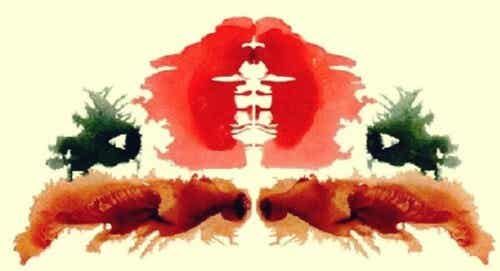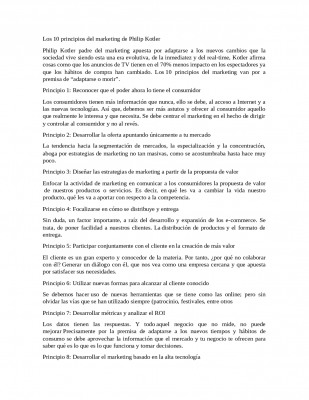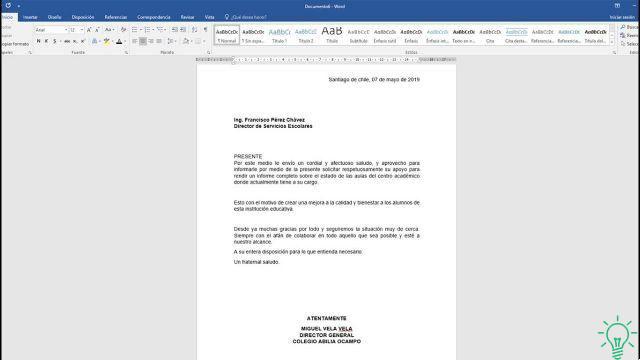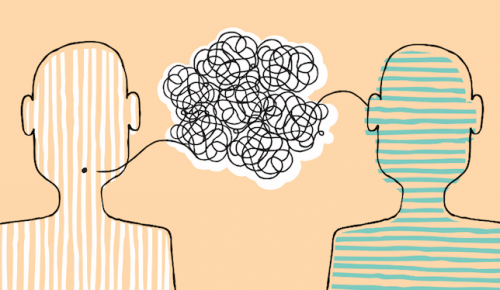The Zulliger test consists of three tables aimed at assessing the personality traits and psychological balance of the individual. This is the test most often used to select personnel.

Written and verified by the psychologist GetPersonalGrowth.
Last update: 15 November 2021
The Z-test or Zulliger test is a projective type test devised in 1942. At first glance it is almost inevitable not to think about the Rorschach test, with which it is often confused. However, it does not follow the same protocol and also offers different benefits. It is easy to apply and has much faster interpretative parameters.
The objective of this test is the same as that of any other projective tool: describe hidden personality traits starting from psychoanalysis's own approach. Having this detail in mind, we can already guess that nowadays it can be the subject of more than one criticism, but it is no less interesting for this. It is mainly applied in personnel selection.
One aspect that can be significantly advantageous compared to other projective tests (such as the figure in the rain, the tree test, the Murray test), is that it relies on valid and reliable data. The statistics produced in this regard give this test a certain reliability, so it tends to be a good ally for the Human Resources sector.
Zulliger test: what it evaluates, where and how it is applied
It is no coincidence that the Zulliger test reminds us so much of the Rorschach test. This tool was developed by Hanz Zulliger, a Swiss psychiatrist who was a pupil of Hermann Rorschach himself. Dr. Zulliger later became a rather influential child psychologist, as well as an advocate of psychoanalytic pedagogy.
Before reaching the pinnacle of his career, he spent several years working for Rorschach. His goal was to understand and deepen the study of human personality through the stain test. To this we must add a decisive fact that occurred in his life: the outbreak of the Second World War and the need to have a test for the selection of the Swiss military.
Hans Zulliger became a determining figure in this regard. He administered the intelligence test, the personality test and the Rorschach tables themselves. Yet he realized one aspect: this test was too complicated and at that moment you needed fluency, speed, effectiveness and the ability to administer the same test to an average of 30 people at the same time.
It didn't take long for him to come up with a new one. Let's see in detail its characteristics.
What does the Zulliger test evaluate?
The Z test or Zulliger test is a projective test. What does it mean? It means that it is a tool from which we can obtain numerous subjective answers.
These start from stimuli that awaken the fantasy of the person undergoing the test, as well as his sensitivity, his desires, his personality traits, etc.
- This tool stands out for its reliability and ease of application.
- Zulliger devised a test with which to quickly identify people without psychological problems and who showed particular inclination towards specific roles in the army.
- This test also helps evaluate mental processes: fears, social adaptability, the emotional universe and the capacity for self-control.
- Nowadays the Zulliger test is administered in many umsnr resource offices to select staff.
How is the administration done?
The Zulliger test can be administered individually or as a group. In both cases the person is presented with three tables explaining that the figures do not represent any particular object; nevertheless, they generally evoke something different in each one. The pardon is then asked to explain what each table suggests to her.
- The first plate features shades of gray, black and white. It is the most compact and should suggest a single concept to the person. Represents deep thinking.
- The second table is the most interesting, as it shows different colors (most of them very lively), as well as several distinct areas. It is the most complex, as well as the one that tends to evoke the greatest number of sensations and emotions. At the time of evaluation, it usually represents aspects such as capacity and order, self-control, etc.
- Finally, the third table plays with gray, black and red. The drawing always suggests a certain dynamism and movement and is associated with social relationships.
Once you've written down your ideas, feelings or images, it's time to talk. It is necessary to explain to the psychotherapist or psychologist what is seen in every corner and in every detail of the boards.
How are the results interpreted?
To evaluate the Zulliger test, a certain mastery and skill in managing it is required. It cannot therefore be administered by anyone who is not an expert on the subject.
- There are no right or wrong answers.
- The data of each table are analyzed, as well as the way in which the person expresses himself. The more details there are, the more sensations, images or experiences the subject under examination will feel, the higher the score. Originality, psychological coherence, self-concept, style of thinking, etc. will also be evaluated.
Although it is a projective and clearly subjective resource, it allows to have a global vision on the inner world and on the personality of the candidate.
Today it is often used in selection processes, together with other tests. The zulliger test is still a fascinating tool today.

























